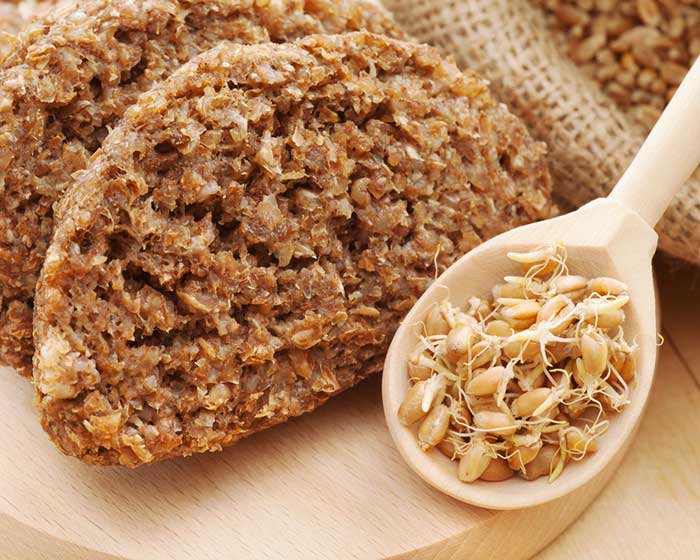How is Sprouted Grain Bread Different?

Now you can Have Your Bread and Eat it Too
Sprouted grain bread is becoming increasingly mainstream, and for good reason.
Sprouting is the practice of germinating seeds. This process makes the seeds come to life, as they literally begin to grow little shoots, making their nutrients more digestible.
Whole grains naturally contain valuable vitamins, minerals, amino acids, proteins, and phytochemicals. When grains are sprouted, it makes these valuable nutrients more bio-available; offering more absorbable nutrients.
A wise teacher once told me, “You are what you absorb, not what you eat.”
Dr. Mary Enig explains how sprouted grain breads contain enzymes to effectively break down gluten and other difficult-to-digest wheat components. She notes, that “if you’re diabetic, sprouted breads have a lower glycemic index and won’t cause post-meal blood-sugar levels or blood-fat counts to spike upwards.” Enig also points out that if you’re reducing calories, sprouted wheat breads provide ounce-for-ounce, more protein and nutrition than many pre-packaged, highly-processed “diet foods.”
Sprouted grain differs from other whole grains in 3 important ways:
- Sprouting activates live enzymes;
- Sprouting increases vitamin content;
- Sprouting neutralizes anti-nutrients like phytic acid, which bind up minerals, preventing your ability to fully absorb them.
When examining the nutrient density of sprouted wheat to un-sprouted wheat on a calorie-per-calorie basis, you’ll find that sprouted wheat contains four times the amount of niacin and nearly twice the amount of vitamin B6 and folate compared to un-sprouted wheat. It also contains more protein and fewer starches than non-sprouted grain, making it more suitable for those suffering from blood sugar issues.
As you may already know, we love Sprouted Manna bread at Mountain Trek! Try one of the sprouted grain breakfasts we offer our guests.










